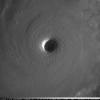-
Posts
4,124 -
Joined
-
Last visited
Content Type
Profiles
Blogs
Forums
American Weather
Media Demo
Store
Gallery
Posts posted by StudentOfClimatology
-
-
Nothing will ever compare to the depth, duration, and temps afterward of Jan. '96. But #3 on my list is certainly Feb '83. Temp was in the low teens during the entirety of the storm and the rates of that storm will probably never be seen again. We got 32" in Warren County, just outside Front Royal, in around 15 hours. It was only the second time in my life (to that point) that I'd experienced thunder snow. Remember being outside playing and the snow pouring from the sky and then, BOOM. I swear, you could see the snow piling up. I remember Bob Ryan talking about snow rates of 4 -5 inches per hour, and I believe it. The intensity of that storm is unmatched. Had it been a slower mover; it would surely have been the storm of the ages. Unfortunately, there was little cold air behind the storm... and it was mid-Feb at that point, so the sun quickly did its damage too. Another reason why Jan '96 and Dec '09 are #1 and #2 on my list.
You're putting December 2009 over February 2010?
2010 blizzards 1995-96 out of the water here..I'm not sure if that's the case out west, though.
-
Snowmageddon number one..such an underrated storm. More QPF than 1995-96 and it was followed by another 1-2 feet a few days later.
That's a once/twice in a lifetime type occurrence.



Best Mid-Atlantic winter storm of the last 40 years
in Mid Atlantic
Posted
No real wind here w/ snowmageddon..which probably added to the tree damage and power lossage as the snow was clinging to everything. We're also pretty sheltered from winds with any easterly component to them.